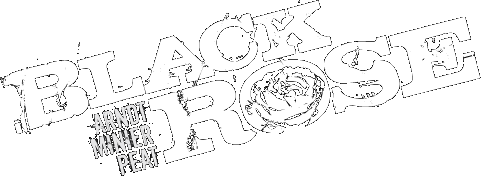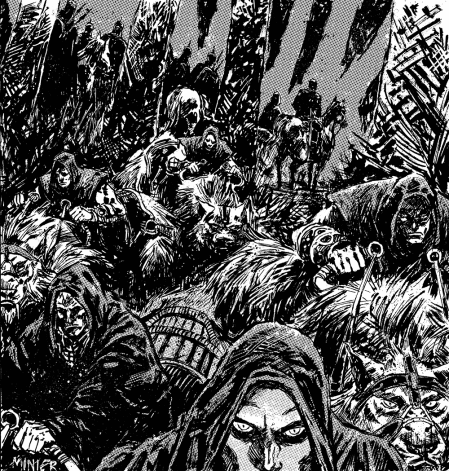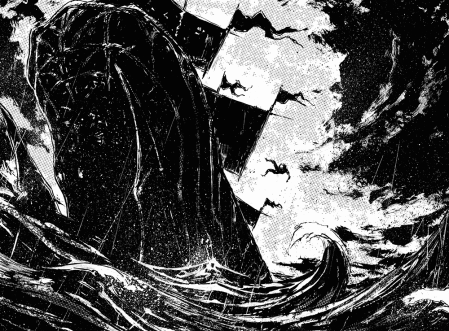Revising Book 1: Let’s Do the Time Warp Again
Over the past few blog posts, I’ve been discussing the changes we made when printing our first trade:
We also had the chance to fix a few continuity gaffes. Most of these were in the form of dialogue, where the evolving backstory of the Black Rose world caused an existing character line to become erroneous information.
One in particular was an elementary-level math error. At the end of Issue 3, a squad of handwavers is assigned to hunt Aliyana down for reasons (at the time) unknown. We knew one of their number was a Necromican Judge, but either forgot that all Judges are masked or failed at basic addition, because nobody was wearing a mask in the original page:
So Aaron went back and added a mask to the character in the foreground, turning them into our missing Judge as shown here. Phew!
There were also two instances where we added a splash page to existing scenes, creating a sort of time warp where the same event is stretched across more panels and thus spans more “time” on the page:
One of the most important turning points in Book 1 comes at the end of Issue 4, where [SPOILER ALERT] Aliyana heals Arion of his mortal wounds, saving him from certain death and revealing to the reader that she has handwaver talents. The scene originally played out on a single page:
For the trade, we added a splash page and rearranged some panels, stretching that moment a bit further and giving it the proper narrative weight. You can see those pages here and here.
We used a similar time-dilation effect during the climax of Issue 6, where Arion is thrown overboard by Trellis’ crew. As I discussed in a previous post, we originally opened Issue 1 with a flashforward of this same scene. Once we removed the flashforward in favor of a more straightforward intro, there were a few panels no longer being used, including one of my very favorites: Arion in midair, silhouetted against the stormy sky:
So we pulled that panel and blew it up into a splash page, again lending some visual heft to this important juncture of our narrative. Ordinarily, enlarging a panel so dramatically would be very noticeable – in a bad way – leaving pixelization artifacts or some obvious variance in line weight/detail, etc. But Aaron’s art is extremely detailed and (fortunately) we were mastering everything at a very high resolution from the start (I’ll talk more about the technical side of file prep in another post for you process junkies), so it worked very smoothly!
That covers the creative changes we made to Book 1, and should give you a glimpse of how things work (or don’t!) behind the scenes. Next week I’ll dive a bit more into the technical side of comic production!







Discussion ¬